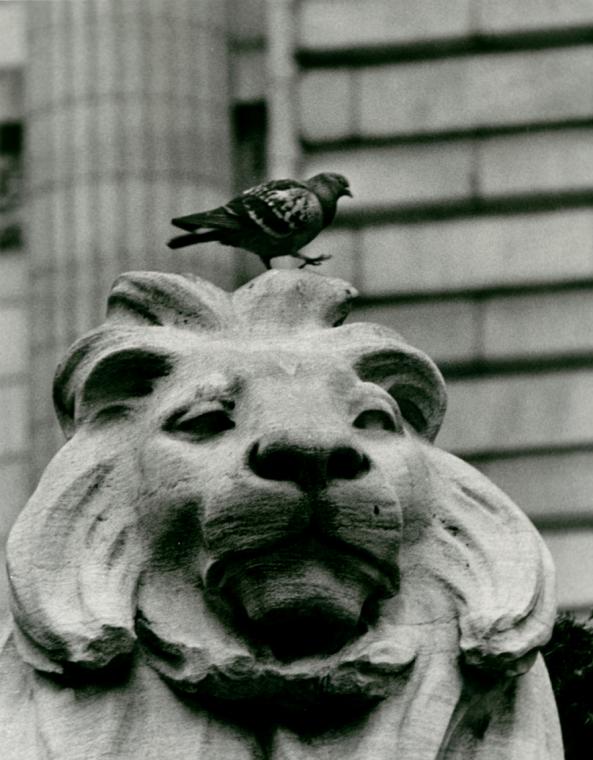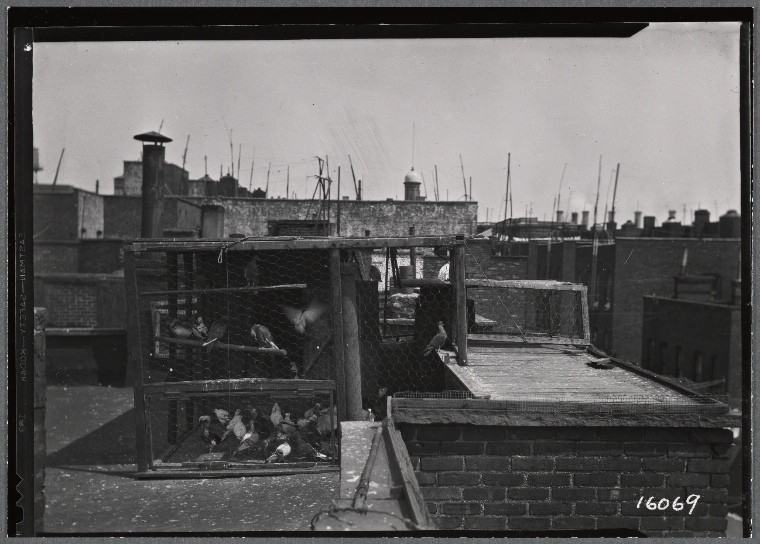NYC Neighborhoods
How Did the Pigeon Get to NYC?

But how did this non-native species become the bird most associated with New York City? Pigeons are certainly not indigenous, but they have made themselves quite at home in the Big Apple. In Wild New York: A Guide to the Wildlife, Wild Places, & Natural Phenomena of New York City, authors Margaret Mittelbach and Michael Crewdson explain "Also called rock doves, pigeons were first brought to this country from Europe, probably during the 1600s, and that their original status here was that of a barnyard animal, raised purely for the table."
Captive pigeons somehow struck out on their own, nesting easily in the crevices of buildings that are not that different than the cliff sides on which their ancestors dwelled. Over time, pigeons and their young squab dwindle from menus and dinner tables. Ironically, most city pigeons depend exclusively on humans to feed them, whether purposefully or accidentally through litter.

The New York Times has covered pigeons in abundance and there are many non-fiction titles out there to help you learn more about these birds such as Pigeons: The Fascinating Saga of the World's Most Revered and Reviled Bird by Andrew D. Blechman. There are pigeon appreciation groups and documentaries by local filmmakers, such as JL Aronson's Up on the Roof. Pigeons are definitely part of New York's wildlife and landscape.
Read E-Books with SimplyE
 With your library card, it's easier than ever to choose from more than 300,000 e-books on SimplyE, The New York Public Library's free e-reader app. Gain access to digital resources for all ages, including e-books, audiobooks, databases, and more.
With your library card, it's easier than ever to choose from more than 300,000 e-books on SimplyE, The New York Public Library's free e-reader app. Gain access to digital resources for all ages, including e-books, audiobooks, databases, and more.
If you don’t have an NYPL library card, New York State residents can apply for a digital card online or through SimplyE (available on the App Store or Google Play).
Need more help? Read our guide to using SimplyE.
Comments
pigeons
Submitted by Cathy Meyer (not verified) on August 27, 2012 - 11:38am
The native/non-native mania
Submitted by Joan Harrison (not verified) on April 9, 2016 - 1:45pm
You’re here -
Submitted by Guest (not verified) on October 14, 2017 - 11:42am
Soldier Pidgeon
Submitted by Anne Healion (not verified) on September 10, 2016 - 3:50pm